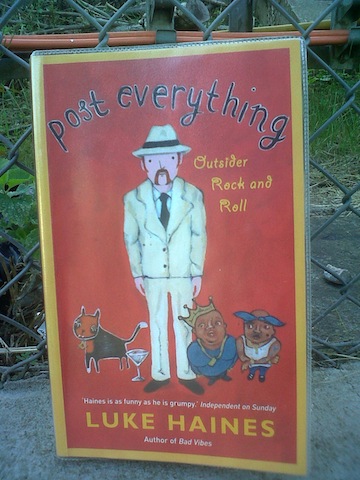
“But this was how the mind worked. The mind couldn’t think about the End of the World all the time. It needed the occasional break, a romp through the trivial. Because it was through trivia that the mind was anchored in reality, as the largest oak tree was rooted, ultimately, in a system of rootlets no larger than the silver hairs on the president’s head.”
For reasons never fully explained, the Moon is destroyed. The shattered pieces of rock threaten to rain down on Earth, killing everyone. Humanity has approximately two years to build a “Cloud Ark” (a collection of spaceships able to group and swarm around the International Space Station) in order to save the species. But of course it’s not that simple...
Neal Stephenson explores this brilliant “what if?” scenario across a huge novel of 867 pages. The best passages deal with the creation of the new, improvised orbital world before – inevitably – politics begin to threaten the idealism of its social structure. The level of technical and procedural detail he packs in is fascinating and I found myself wanting this part of the book to be even longer than it was, because its encyclopaedic reach is so powerful.
He has fun with specialist terminology, jargon, acronyms and so on, such as:
• BFR = Bolide Fragmentation Rate
• CAC = Cloud Ark Constitution
• Flivver = Flexible Light Intracloud Vehicle
• HGA = Human Genetic Archive
• MIV = Modular Improvised Vehicle
• PSAPS = Periods of Simplified Administrative Procedures and Structures
It might annoy some readers but I really like the way he explains the science as he goes along.
The author is also good on the nature of power/authority and what social rules mean without Earth’s laws and structures to maintain them. The US President is a major character and significantly influences the way events unfold.
Stephenson wasn’t particularly strong on the emotional aspects of the story. In some ways this worked: astronauts building a brave new civilisation cannot be sentimental. But in another sense, the death of planet Earth and everything we have ever known or loved seems like it should’ve been a bigger deal than that experienced by the few survivors.
Either way, It’s an exciting read – not least because it seems so plausible. Stephenson explained in interviews that he didn’t want fictional get-out clauses (such as the hyperdrives of Star Wars or the teleports of Star Trek). Instead, pretty much everything in the book feels like it follows known scientific laws. This makes it a lot easier to relate to and a lot more believable.
Following an awkward cut-off scene (it seems that the author didn’t know how to resolve the story), the final third of the book is set 5,000 years later. This, inevitably, feels like a different novel entirely, even though the human society it depicts is very clearly derived from the survivors of the first two thirds. We are told that there are now 3 billion humans, so the “will they?”/“won’t they?” survival story of the earlier sections is completely deflated, replaced with an exploration of what survival was like and what happened next. This section is hardly edge-of-the-seat stuff and arguably didn’t need to be written. I would have far preferred a brief postscript set 300 or 500 years later letting you know how the handful of survivors were getting on.
Despite – or because of – the endless descriptions, I found it impossible to visualise the structures of the Eye, the Habitat Ring, the Great Chain and the Cradle. Sometimes, in this section of the book, the passages become dense and turgid as layer upon layer of detail is accumulated. This is ironic as it was precisely that obsessive detail that made the earlier sections so enjoyable. Here’s one example:
If you took a large number of Flynks – flying, autonomous chain links—and joined them together into a long chain, and connected its ends to make it into a continuous loop, and then got the whole loop moving through the air like a train composed of little airplanes, each using its stubby winglets to generate its share of the lift, then you had a thing known as an “aitrain,” pronounced the way a resident of Old New York would have said “A train.” The concept was old enough that its etymology had been obscured by time. It might have been “air train” with the first r elided, or a contraction of “Aitken train.” Sometimes, as here, it was a captive aitrain, passing continuously through a fixed installation on the ground and rising from there to a considerable altitude before reversing direction and plunging back down for another circuit. But aitrains could also fly freely in the air: a technology crazy enough that it had become associated with the Aidan big-brains known as Jinns, or Ghenis, and tended to be used only by Red.
There are other flaws with this final section. The notion that the human population divides neatly into seven distinct races descended from the original “seven Eves” is hard to believe. Even more improbable is the discovery that humans survived on Earth after all and that their leader was none other than Ralph McQuarie, father of the “Eve” named Dinah. Another survivor was the submarine-inhabiting fiancé of the Eve named Ivy. What are the chances? By this point I was ready to hurl the book across the room. Also, the potentially interesting notion of “epigenic” shifts amounts to nothing when Kath Two transitions into Kath Three (Kathree), with no bearing on the plot at all. And the end just fizzles out completely.
It’s simply not convincing, which is a real shame and also infuriating because there are dazzling passages in the earlier stages of the novel as compelling as any sci-fi I have read.







